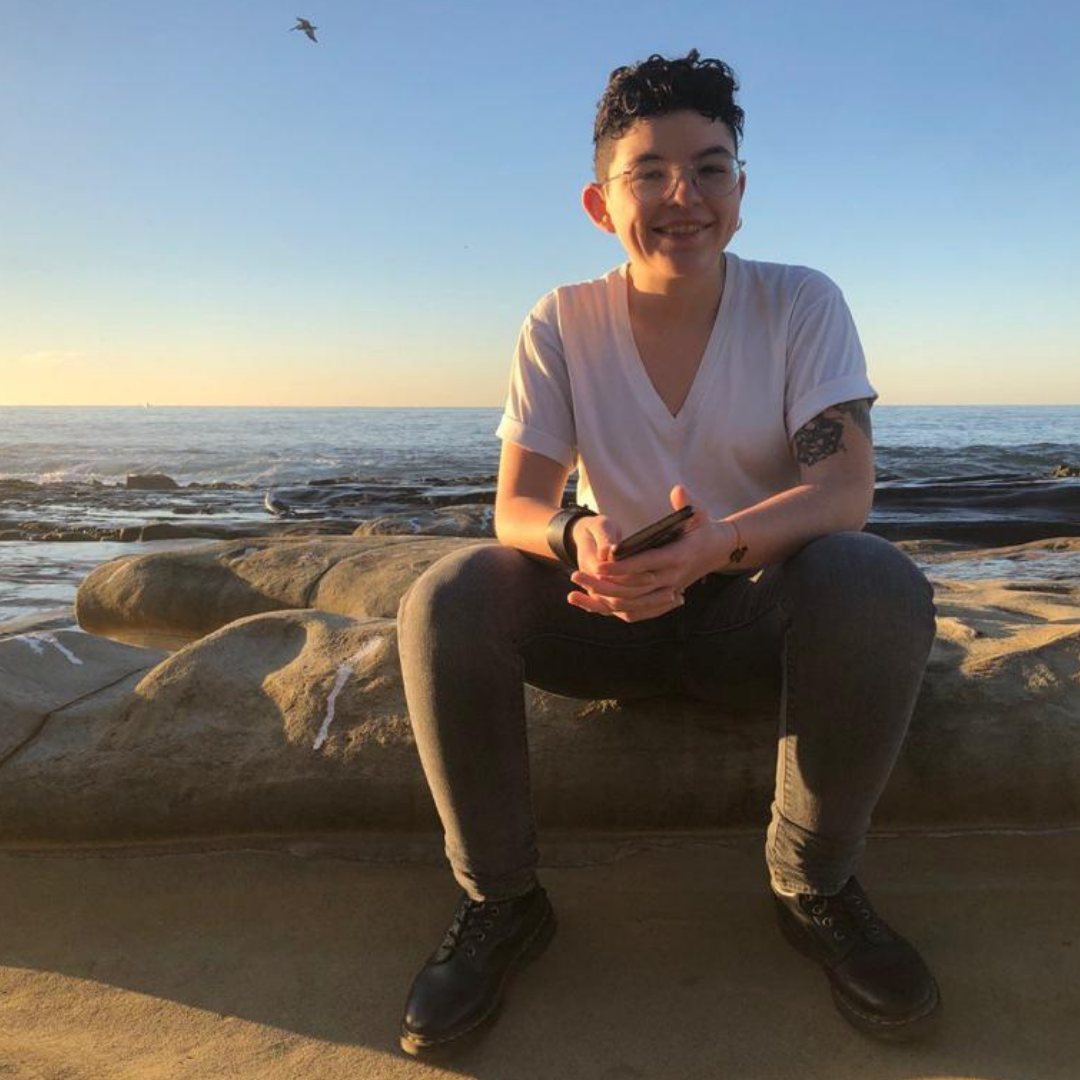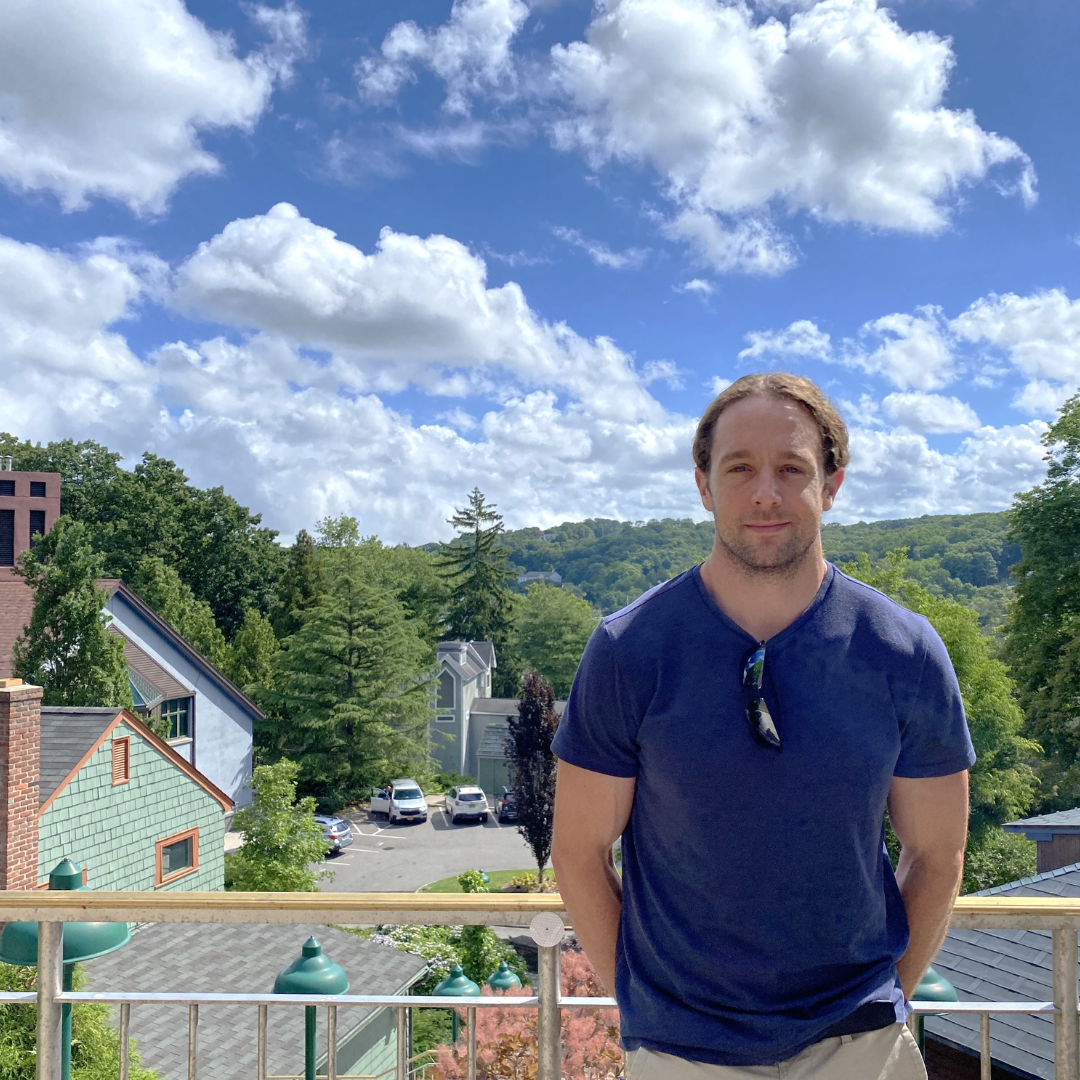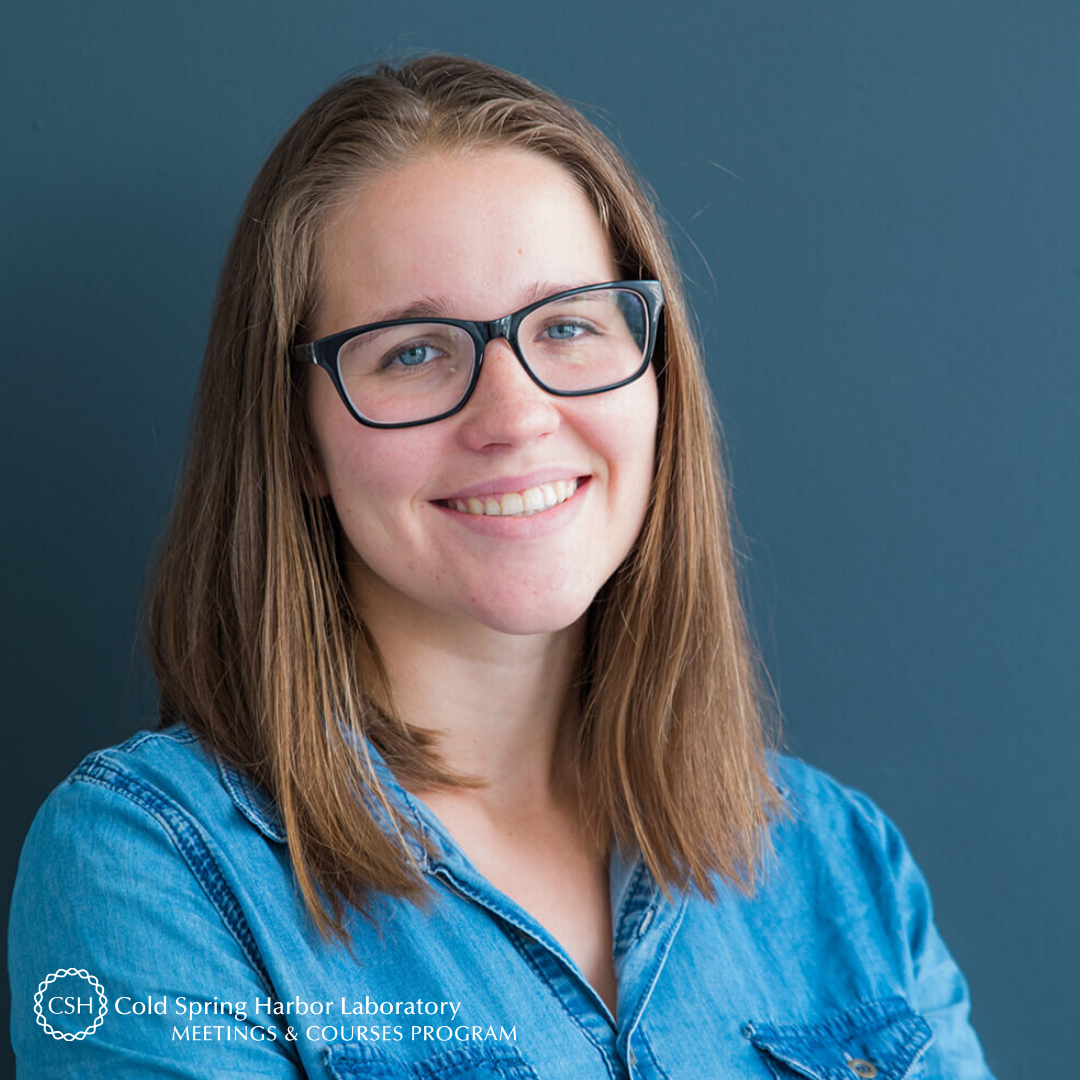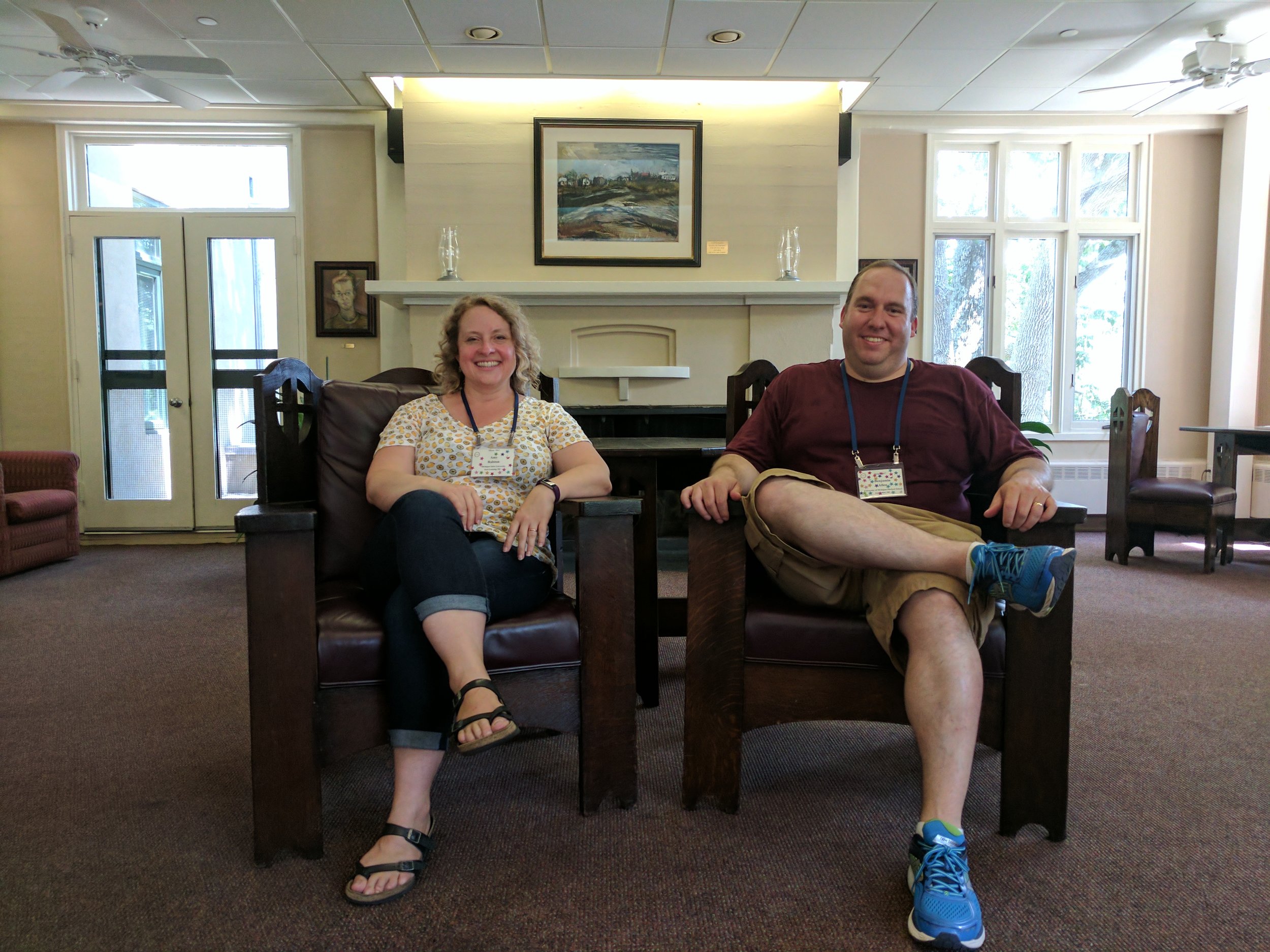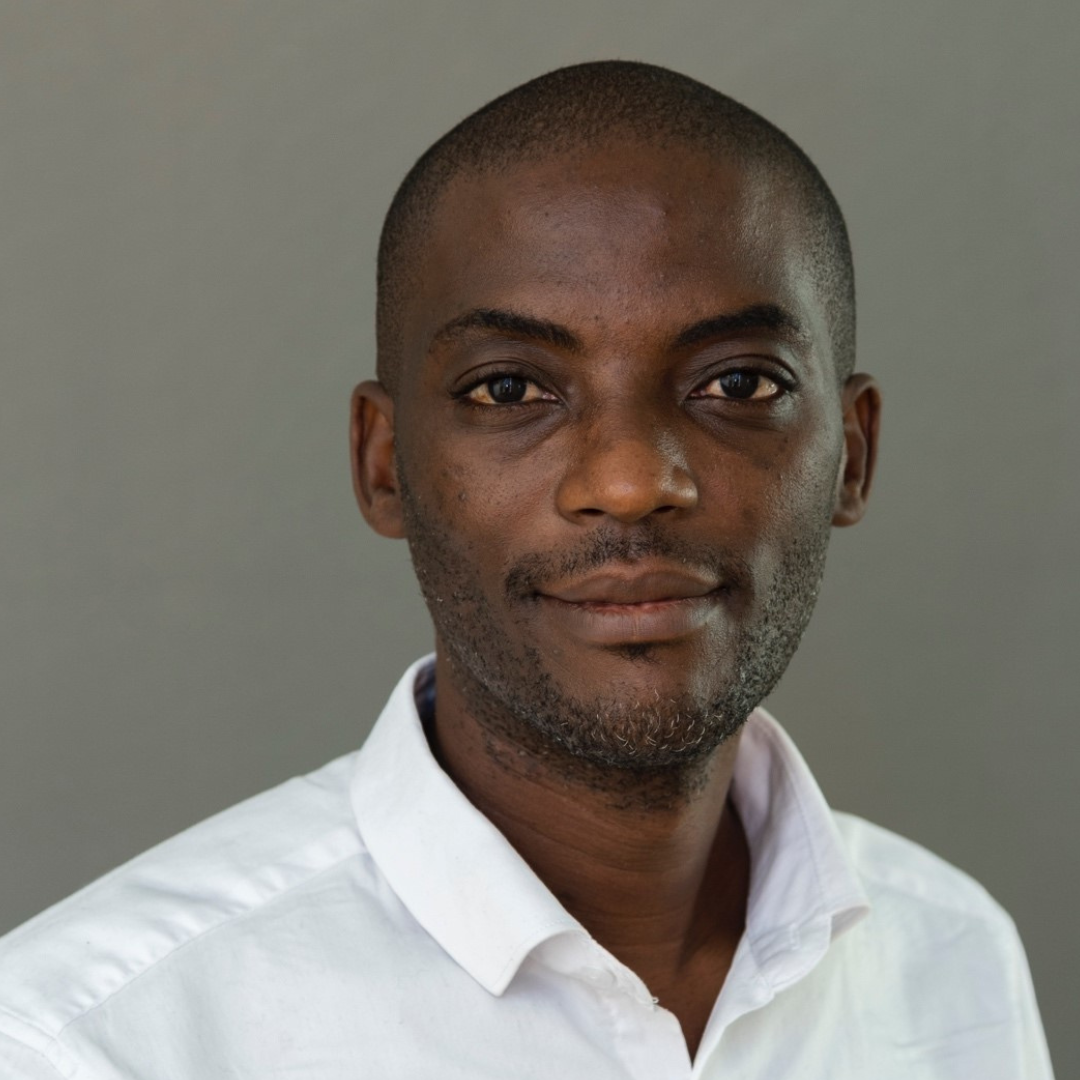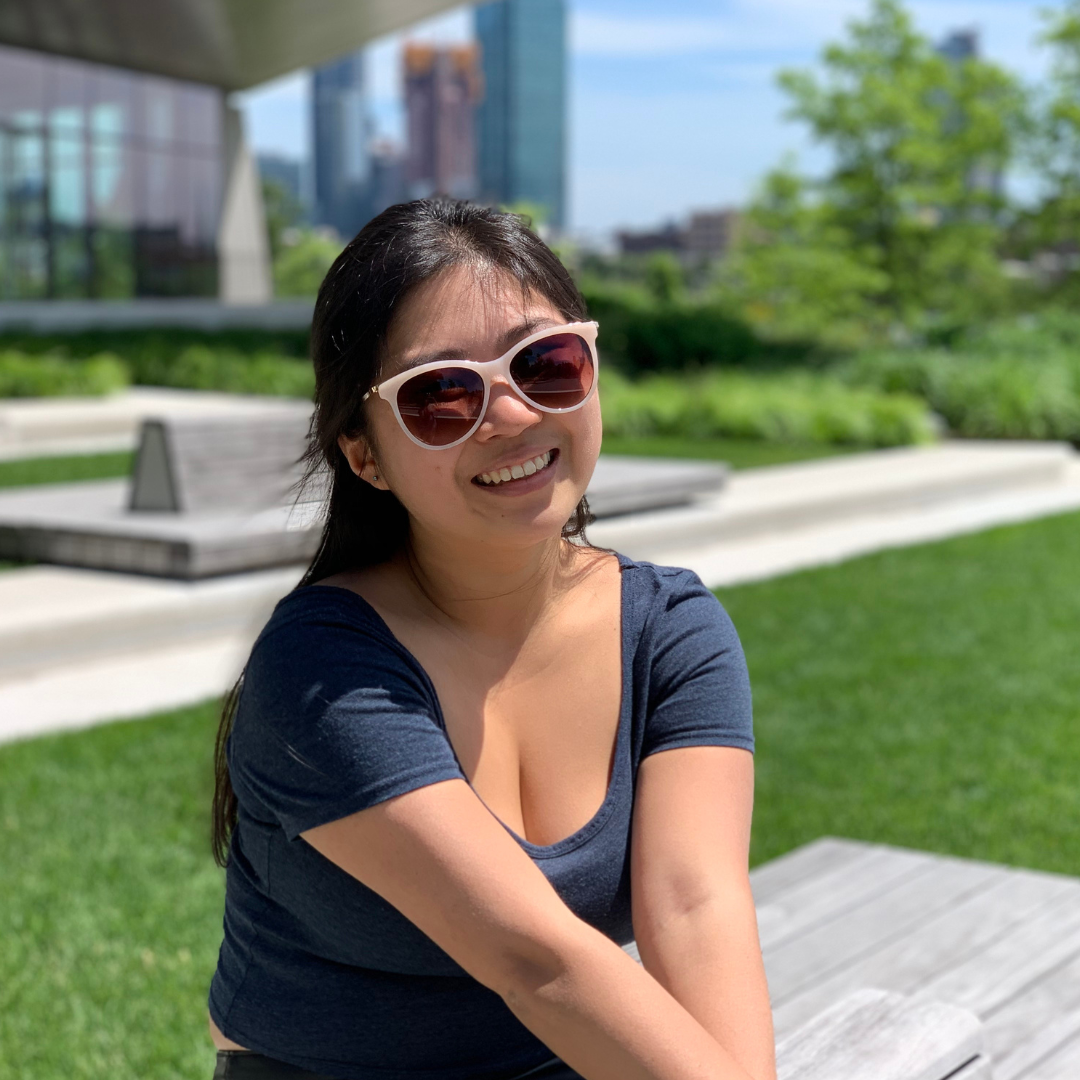Brianna Bibel, CSHL School of Biological Sciences
The COVID/SARS CoV2 Rapid Research Reports is a series of meetings organized by Cold Spring Harbor Laboratory (CSHL) that brings together scientists from around the world to discuss the very latest research on the novel coronavirus SARS-CoV-2 and the disease it causes, COVID-19. The series began in June 2020 and continues with the sixth installment this July.
Brianna “Bri” Bibel is a fifth-year graduate student in the CSHL School of Biological Sciences studying biochemistry and structural biology in Leemor Joshua-Tor’s lab. Bri is the scientist behind the popular blog, The Bumbling Biochemist and Instagram account @thebumblingbiochemist. Her style of explaining basic biochemical experiments is approachable, and appreciated by science teachers and young students alike.
After a well-deserved break for the fourth CSHL COVID meeting which was held in Suzhou time, Bri returns to guest write for us, reflecting on the fifth installment of the meeting series:
It’s been over a year since SARS-CoV-2, the coronavirus that causes the disease COVID-19, was discovered, and scientists are still learning new things about it daily as labs across the world dedicate themselves to unlocking the virus’ mysteries. Whether it’s determining if so-called “Variants Of Concern” are truly concerning (and if so, why), teasing apart why some people get much sicker than others, or discovering potential therapeutics to stop the disease in its tracks, there’s much to be learned. But of course, knowledge is only useful if it’s shared, and science thrives best when it isn’t siloed. CSHL’s Rapid Research Reports meetings continue to provide an opportunity for coronavirus researchers from around the world to come together, present their findings, get feedback and ideas, and maybe even strike up new collaborations.
Neil Ferguson, Imperial College London
The latest Rapid Research Reports meeting, the fifth in the series, was held virtually in January. It started with the topic that was on all our minds and in the headlines – the new coronavirus “Variants Of Concern” or VOCs. Imperial College London’s Neil Ferguson got us up to speed on what was known at the time about the B.1.1.7 variant first identified in Britain. Most of us had heard about B.1.1.7 only recently but, according to Ferguson, genomic surveillance data indicates that it actually emerged last August or September, likely in the UK, before gaining wider ground during the winter months. Unlike in the United States, where genomic surveillance has been lacking, the UK’s surveillance infrastructure was well-situated to detect when B.1.1.7 started to gain dominance. One of the reasons scientists were concerned was that it did so very quickly: By the time of the meeting, the variant was already over 50% frequency in the UK.
A short primer on viral mutation
Viruses mutate all the time because each time they replicate their genetic information (genome), there is a chance for typos. We call these typos mutations, and when you get a mutation you get a viral variant. This might sound scary, but most of the time these variants are inconsequential (or they make the virus less fit, so it can’t survive). Thus a variant, in and of itself, isn’t scary.
Sometimes however, a virus acquires a mutation that makes it more fit (e.g., allows it to spread more easily), and epidemiologists are always on the lookout for evidence of that happening. Often this evidence initially comes from genomic surveillance – scientists sequencing the RNA of random viral samples discover that a growing proportion of the samples they test are of a certain variant. When this happens, they might give that variant the “VOC” label.
Many of these VOC’s turn out to be coincidences, often the result of genetic founder effects whereby a viral variant is able to spread more widely because it “gets there first” and/or has more opportunities to spread, such as if a person sick with it attends a crowded event. In those cases, the mutations in the variant aren’t causative of the variant’s wider spread, they’re just “passenger mutations.” But the reason VOCs are concerning is because there really can be something to be concerned about – some mutations really do matter.
“...a variant, in and of itself, isn’t scary. Sometimes however, a virus acquires a mutation that makes it more fit...and epidemiologists are always on the lookout for evidence of that happening.”
The B.1.1.7 variant
At the time of the meeting, scientists were still trying to figure out whether the B.1.1.7 mutations mattered. We call B.1.1.7 a variant but it actually contains numerous variations compared to the original reference genome (the sequence of the initial sample from Wuhan). These variations include, most concerningly, mutations in the Spike protein. Often abbreviated as simply “S,” the Spike protein juts out from the viral membrane and helps the virus latch onto our cells by binding to cellular ACE2 receptors. Certain antibodies made by the immune system in response to SARS-CoV-2 infection or vaccination can bind to S in such a way as to block that docking and thus stop the virus from infecting cells. Therefore, scientists are always worried that the S protein might evolve in a way that prevents these neutralizing antibodies from binding, allowing the virus to escape the immune system. Thankfully, Neil Ferguson told us there was no evidence of such immune escape with B.1.1.7, so antibodies invoked by vaccines or natural immunity from prior infection should still be able to stave it off.
Furthermore, Ferguson told us that one S mutation in B.1.1.7 was actually fortuitous for epidemiologists because it made the variant easily spottable in the lab without requiring full-on genetic sequencing. This is because the mutation involves a deletion in part of the S gene that’s looked for by one of the diagnostic tests commonly used in the UK. The test, a PCR test, works by using short DNA probes called primers to look for several regions of viral genetic information. Because the S mutation contains a deletion in one of the primers’ binding sites, that primer would give a negative result, but the test’s other primers would give positive results so the person would still be determined positive for the virus. Using data from genomic surveillance and from the frequency of “S dropout” in the PCR results, Ferguson estimated that B.1.1.7 was about 40-70% more transmissible than the reference strain.
The D614G variant
Another S mutation that scientists have been watching for much longer is a genetic typo leading to an amino acid change, D614G. The “D614G” nomenclature means that the RNA mutation causes the 614th amino acid (protein letter) of the S protein to be swapped from an aspartate (D) to a glycine (G). Aspartate is a big and negatively-charged amino acid whereas glycine (G) is tiny and neutral, so scientists have long suspected that this swap could affect how the protein functions and/or is processed. At the meeting, we saw evidence that this is indeed the case.
The CDC’s Bin Zhou told us that this amino acid change enhances the virus’ ability to replicate and spread, which likely contributed to D614G becoming the dominant version of S currently circulating globally. First, he showed results from experiments using purified proteins which demonstrated that D614G has enhanced binding to ACE2 compared to the original reference version. I had seen similar studies done before, but the next things he showed us I had never seen, and they were really cool! Zhou did competition experiments in which he pitted the D614G-containing virus against the original under different conditions and saw which won out. He started with cell culture experiments – when he treated cells with equal amounts of D614G and original virus and then observed which became dominant in the cell culture, D614G won every time. Even if he started with 9 times more of the original, the D614G variant was able to gain ground. But does that correspond to real, in vivo, effects? Zhou showed results from competition experiments in hamster and ferret models of SARS-CoV-2 infection as evidence that yes, it does: In the animal models, D614G outcompeted the original and was able to spread better from animal to animal.
Sophie Gobeil, Duke University School of Medicine
But why? Could hints be in the spike’s structure? Sophie Gobeil, a postdoctoral researcher in Priyamvada Acharya’s lab at Duke University School of Medicine, thinks so. She presented a poster of work she and colleagues had done characterizing the effects of D614G at the structural level. Using cryo-electron microscopy (cryo-EM), they got high resolution looks at the original and D614G versions of the S protein. One thing to know about S is that it’s a homotrimer, meaning it’s made up of three identical subunits working together. Each of these subunits contains a receptor binding domain (RBD) which, if in the “up” conformation, can bind to cellular ACE2 receptors, allowing the virus to dock onto our cells. Gobeil found that, compared to the original S, the D614G S protein was more likely to have an RBD in the up conformation, and thus was more “ready” to bind ACE2. The amino acid change is far from the RBD itself, which Gobeil says indicates local disturbances to accommodate the glycine led to ripple effects elsewhere in the protein – a phenomenon biochemists refer to as allostery.
Although the amino acid swap-out is far from the RBD, it’s near the furin cleavage site. Furin is a sequence-specific protease (protein-cutter), and the furin cleavage site is a location on the protein that contains the sequence furin likes to cleave. Gobeil presented evidence that the D614G change enhanced cleavage by furin. Why might that matter? Antoni Wrobel, a postdoctoral researcher in Steven Gamblin’s Lab at the UK’s Francis Crick Institute, has some ideas – and data! Wrobel showed us how this cleavage loosens up S in a way which primes it for fusing with the cell’s membrane and dumping the virus’ contents into the cell.
If the D614G variant is more easily cleaved by furin, as Gobeil showed, then it would then be primed more often, as Wrobel showed, and this could help explain some of the increased transmissibility Zhou saw in his challenge studies. It was great to see different avenues of research from researchers around the world coming together to help piece together this scientific puzzle!
“...different avenues of research from researchers around the world [came] together to help piece together this scientific puzzle!”
Immune response and disease severity
Speaking of puzzles, one of the most puzzling things about SARS-CoV-2 is that it affects people so differently, with some developing severe pneumonia while others don’t even know they’re infected. To investigate why this is the case, scientists have dissected the immune system response in patients spanning the entire spectrum of disease severities, and at the meeting we got to hear from some of the immunologists leading this charge.
“Patients with COVID have high levels of...autoantibodies against many cellular proteins, including the immune system’s own proteins.”
James Heath, a scientist at the Institute for Systems Biology, told us about a deep, longitudinal analysis he was doing on the blood of around 200 COVID patients with a full range of disease severities. His group collected blood samples from patients at time of diagnosis, 1 month later, and 2-3 months later, then performed as many experiments as possible to try to determine everything that was in the blood: Proteomics to study the proteins present, metabolomics to look at small chemical products of metabolism, even single-cell secretome tests to see what signaling molecules cells released. Heath fed all that data into his computer and asked it to look for trends. When he did this, he found distinct signatures of mild vs. moderate disease, and also saw evidence of a lingering immune response in patients with moderate to severe COVID months after the original infection.
And that’s not the only evidence of immune system dysregulation seen in COVID patients. One thing that became apparent early on in the pandemic was that many of the sickest people were suffering not from the viral attack itself per se, but from their own immune systems. We usually think about antibodies as being “good,” such as anti-S antibodies binding to the Spike protein. But not all antibodies are good – they’re only good if they target things that are “bad.” Antibodies against one’s own proteins are called autoantibodies and they can cause the immune system to attack the body, destroying cells and tissues. Evidence from a number of labs shows that patients with COVID have high levels of such autoantibodies against many cellular proteins, including the immune system’s own proteins.
Aaron Ring, Yale School of Medicine
Because there are so many different proteins these antibodies could be binding to, it has been hard to measure and characterize them, but Yale’s Aaron Ring told us about a system he developed to do just that. Named Rapid Extracellular Antigen Profiling (REAP), the basic idea is to get yeast cells to make human proteins and display them from their surface. More specifically, each yeast cell displays a different human protein and contains a corresponding DNA barcode, which Ring can sequence to infer what protein was displayed. He then mixes a patient sample with the yeast cells. If that sample contains antibodies targeting human proteins, those autoantibodies will bind to the yeast cells displaying those proteins. He can then isolate the antibodies and any bound yeast, and use DNA sequencing to see what human proteins the antibodies were stuck to.
Using this system, Ring confirmed and expanded the findings of other researchers showing that patient samples contained high levels of autoantibodies targeting proteins on the surface of immune cells. He presented evidence that these autoantibodies lead to the depletion of specific populations of immune cells, contributing to immune system dysfunction. He also found autoantibodies against proteins that are prevalent in a variety of tissues known to be affected by COVID, including tissues of the vascular system, heart, lungs, and central nervous system. The autoantibody signatures were different for different patients, and he’s following up on these findings to determine whether levels of these tissue-specific autoantibodies are associated with specific symptoms. He’s also tracking autoantibodies from samples taken over time to figure out whether they may be implicated in post-COVID syndrome (aka long COVID). Because the technology is so new, he doesn’t yet know how much of what he sees is specific to COVID as opposed to being a general viral response, but he’s eager to test samples from patients recovering from other viruses in order to find out!
“[Teams of scientists] are hard at working tyring to discover new antiviral therapeutics, especially ones that can be taken on an outpatient basis.”
Antiviral therapeutics
With all the talk of vaccination in the news, it’s easy to forget that there’s a whole other pharmacological aspect to confronting the pandemic which we will still need as long as the virus is around – namely, treatment. But teams of scientists around the world aren’t forgetting. Instead they’re hard at work trying to discover new antiviral therapeutics, especially ones that can be taken on an outpatient basis. At the meeting, we got to hear some of the latest prospects.
John Chodera, Memorial Sloan Kettering Cancer Center
One of my favorite talks was from John Chodera, a computational chemist at Memorial Sloan Kettering Cancer Center. Chodera told us about the “COVID Moonshot” project, which uses crowdsourcing to develop an inhibitor of the SARS-CoV-2 main protease (MPro). SARS-CoV-2 has many proteins, but it makes them as a long chain of connected proteins called a polyprotein. In between different proteins in the chain are protease cleavage sites, and the virus gets our cells to make the specific protease that recognizes them; block that protease and the virus can’t separate its proteins and thus can’t replicate. The goal of the COVID Moonshot project is to develop molecules that can to do just that.
I’d actually been following this project for a while, so it was great to hear a talk from one of the leaders. The basic story is that scientists at the Diamond Light Source in the UK soaked crystals of MPro with a compound fragment library (basically little drug-parts). Some of those fragments bound to MPro and the scientists used x-ray crystallography to solve crystal structures showing, at the atomic level, where those fragments bound in the protein. They then uploaded their data and asked volunteers to try to connect and/or modify the fragments to design drugs that could bind better and hopefully inhibit MPro. The team used an AI tool called PostEra to predict which designs would be easiest to make, then selected the most promising designs, synthesized the molecules, and tested them. In their first round, over 350 designers submitted a total of more than 7,000 molecules and the team synthesized and tested over 800 of them, finding promising leads that they then followed up with optimization.
Amanda Hargrove, Duke University
We also heard talks on other potential treatments that I hadn’t heard of before. For example, Duke chemist Amanda Hargrove told us how her lab is developing small molecules that target the coronavirus’ RNA. We often think about RNA as long strands, but those strands fold up into functional 3D shapes. SARS-CoV-2 has multiple stem-loop folds that are crucial for viral replication, and Hargrove is working to create molecules that specifically bind those structures and inhibit replication. The work she presented was based off of knowledge she’d gained while doing similar experiments to target HIV RNAs; in addition to potentially treating COVID, the knowledge she gains from her current work can likely be used to help treat other diseases with some tweaks of the molecules’ chemistry. RNA-binding drugs are definitely an exciting field to keep an eye on!
Speaking of keeping an eye on things, I can’t wait to see what’s in store at the next Rapid Reports meeting!
This post is part of a series, and here is a summary of the first, second, and third COVID meetings.
The next installment of the CSHL COVID/SARS CoV2 Rapid Research Reports meeting series will take place on July 7-8, 2021.










